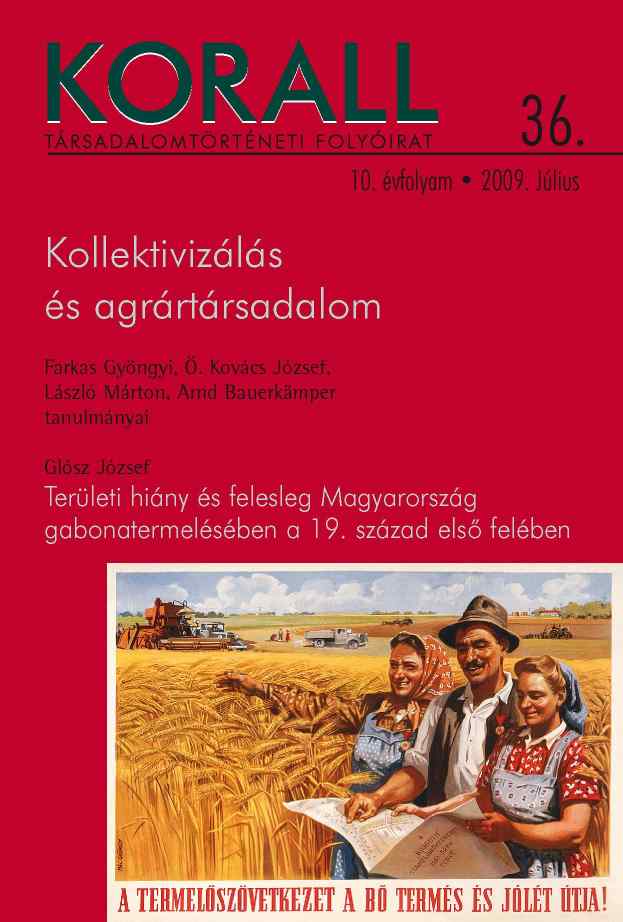A kollektivizálás menetrendje és modelljei Székelyföldön
Models and Sequence of Colletivisation in Seklerland
Author(s): Márton LászlóSubject(s): History
Published by: KORALL Társadalomtörténeti Egyesület
Summary/Abstract: This article presents the models and sequence of collectivization in Seklerland, a Transylvanian county in Romania. The main obstacles of research were changes in administration, biased communist rhetoric and ambiguous statistical data. Collectivization was part of a bigger process: the transformation of rural society and agriculture. From 1948, when communists took over Romania, they tried to transform rural society: traditional wealthy peasants and the clerical elite were deprived of their leading roles in the rural state offices and economic organizations. Th ey were replaced by the poor and landless who were loyal to the Communist Party. Collectivization in Romania was implemented in three major stages between 1949 and 1962, and the process was influenced both by internal party feuds and international political pressure. There were three types of agrarian collective industrial units in this process of collectivization. The collectivization of Seklerland had the same model on a lower scale. Between 1949 and 1952 mostly collective factories were organized. Between 1952 and 1959 collective farm units were organized. The land and agricultural means of production remained personal property of peasants, but the land was cultivated collectively. From 1959 to 1962, the majority of collective farm units were organized into collective factories.
Journal: Korall - Társadalomtörténeti folyóirat
- Issue Year: 2009
- Issue No: 36
- Page Range: 55-84
- Page Count: 30
- Language: Hungarian

